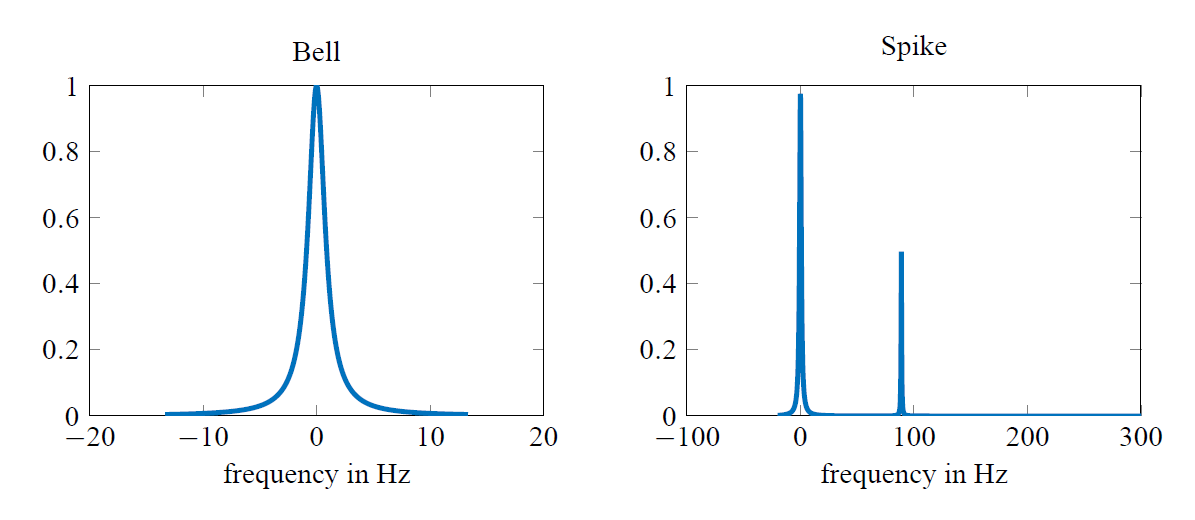Moving persons, cars or other objects cause the environmental channel properties to change. Furthermore signals being reflected by them experience a doppler shift which results in a dispersion in the frequency domain. The shifted rays are superimposed at the receiver which leads to doppler fading introducing time selectivity to the channel. The doppler frequency fd is described by:
fd=vcosϕλ
where
- v denotes the relative velocity
- ϕ denotes the phase of a reflected signal
- λ is the wavelength of the signal
Due the possibility of being negative as well as positive the bandwith
B of a transmitted signal increases to
B+Bd. Where
Bd denotes the doppler spread which is defined by:
Bd=2fdmax
The broadening of the spectrum can be seen in the resulting doppler-power-spectrum which models the power-spectral-density as a function of its doppler frequency. From another perspective the doppler-power-spectrum can be descbribed as a probability density function for the random doppler frequency and is therefore a suitable instrument to simulate a doppler fading process. This is being achieved by generating a rayleigh fading signal and filtering it with a doppler filter to approximate the desired doppler-power-spectrum [2].
The 802.11n doppler model [3] includes 2 different doppler-power-spectra. The first one is the so called "bell" shaped spectrum simulating slowly moving persons inside a building and is described by
S(f)=11+9(ffd)2
where fd denotes the doppler frequency which is defined by
fd=v0λ=v0fcc
where
- λ denotes the signal wavelength
- fc denotes the carrier frequency
- c the speed of light
- v0 is 1.2 km/h and was chosen after a series of measurements
The second one is the "spike" shaped spectrum which was chosen to simulate a car driving with
v1=40 km/h and is used only for the large open space scenario. It is defined by
S(f)=11+9(ffd)2+0.51+90000(f−fspikefspike)2
where
fspike is calculated the same way as
fd but with
v1 as a parameter.


